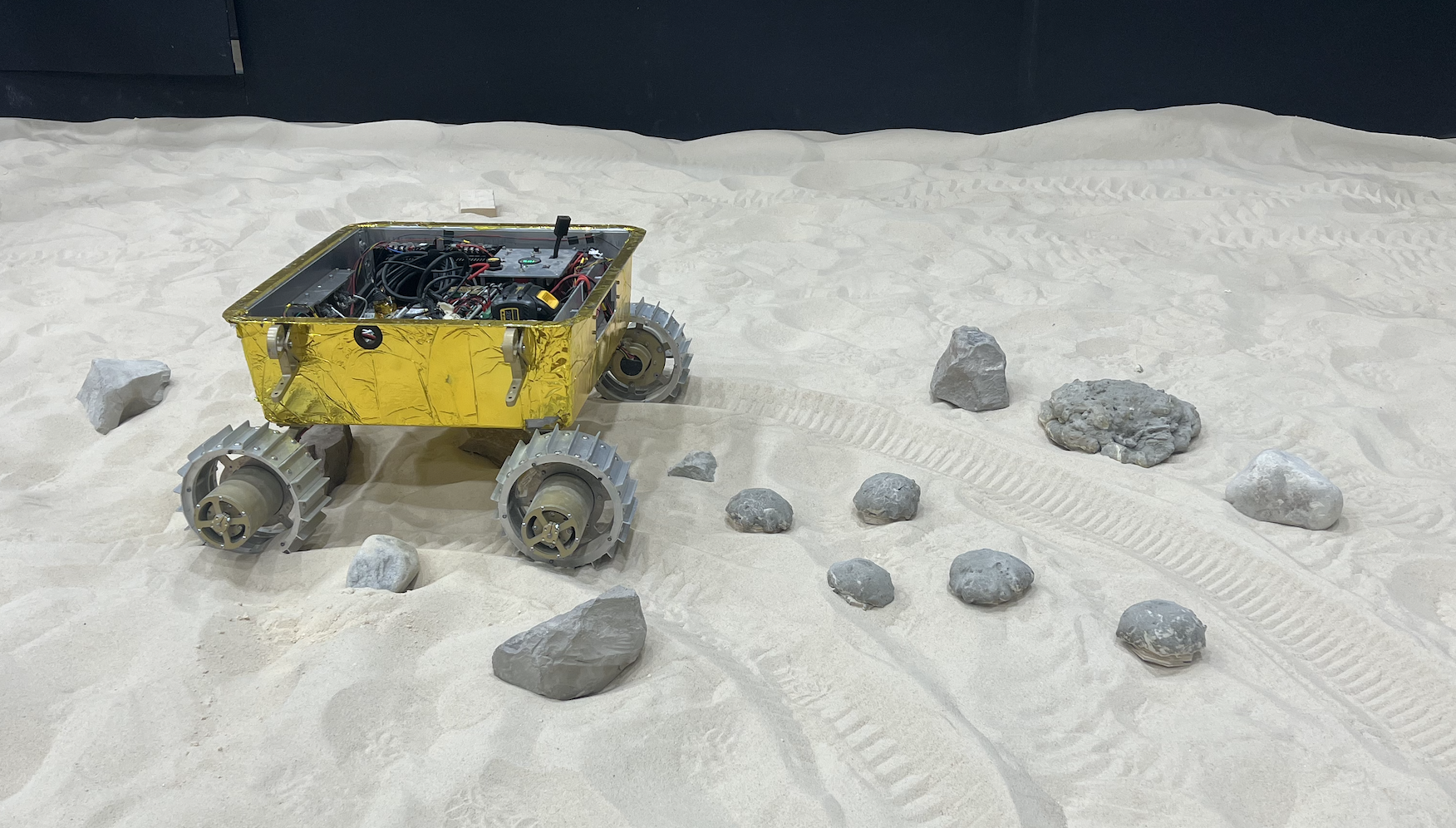Localizing MoonRanger
Localization makes a best estimate of a robot’s position by fusing data from wheel encoders, inertial measurement unit, sun compass, and camera images (visual odometry). These four sources are fused into a best estimate by combining them with an Extended Kalman Filter (EKF). Unlike Earth, this is done for the Moon without GPS. The estimate … Continued

